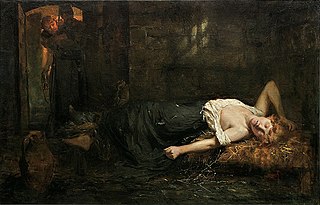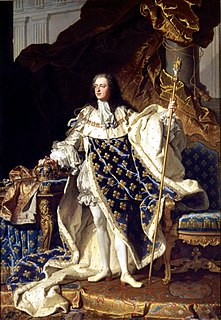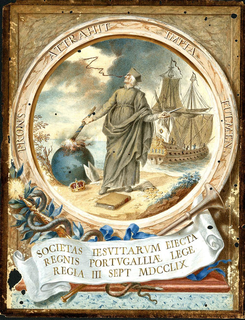 W
WThe Ancien Régime, also known as the Old Regime was the political and social system of the Kingdom of France from the Late Middle Ages until the French Revolution of 1789, which led to the abolition (1792) of hereditary monarchy and of the feudal system of the French nobility. The late Valois and Bourbon dynasties ruled during the Ancien Régime. The term is occasionally used to refer to the similar feudal systems of the time elsewhere in Europe - for example, in Switzerland. The administrative and social structures of the Ancien Régime resulted from years of state-building, legislative acts, internal conflicts, and civil wars. The Valois Dynasty's attempts to reform them and re-establish control over the scattered political centres of the country were hindered by the Huguenot Wars. Much of the reigns of Henry IV and Louis XIII and the early years of Louis XIV focused on administrative centralization. Despite the notion of absolute monarchy and the efforts by the kings to develop a centralized state, the Kingdom of France retained administrative irregularities: authority regularly overlapped, and nobles resisted change and did their best to retain autonomy.
 W
W"Après moi, le déluge" is a French expression attributed to King Louis XV of France, or in the form "Après nous, le déluge" to Madame de Pompadour, his favourite. It is generally regarded as a nihilistic expression of indifference to whatever happens after one is gone, though it may also express a more literal forecasting of ruination. Its meaning is translated by Brewer in the forms "When I am dead the deluge may come for aught I care", and "Ruin, if you like, when we are dead and gone."
 W
WCamisards were Huguenots of the rugged and isolated Cévennes region and the Vaunage in southern France. In the early 1700s, they raised an insurrection against the persecutions which followed Louis XIV's Revocation of the Edict of Nantes, making Protestantism illegal. The Camisards operated throughout the mainly Protestant Cévennes region including the Vaunage and the parts of the Camargue around Aigues Mortes. The revolt broke out in 1702, with the worst of the fighting continuing until 1704, then skirmishes until 1710 and a final peace by 1715. The Edict of Tolerance was not finally signed until 1787.
 W
WJoseph Omer Joly de Fleury (1715-1810) was a member of the distinguished Joly de Fleury family, originally from Burgundy, from which came a number of leading French magistrates and officials under the ancien regime. He is notable for four principal things: his strong opposition to the philosophes and the publication of the Encyclopedie in 1759; his role in the expulsion of the Jesuits; his involvement in the Lally Tollendal Affair; and his ban on inoculation against smallpox in June 1763. In a pun on his name, Voltaire described him as ‘ni Homère, ni joli, ni fleuri'. In one of his private letters, Voltaire described him as a ‘little black balloon puffed up with stinking vapours’
 W
WFrance was one of the leading participants in the Seven Years' War which lasted between 1755 and 1762. France entered the war with the hope of achieving a lasting victory against Prussia, Britain and their German allies and with the hope of expanding its colonial possessions.(1)
 W
WThe term France–Habsburg rivalry describes the rivalry between France and the House of Habsburg. The Habsburgs headed an expansive and evolving Empire that included, at various times, the Holy Roman Empire, the Spanish Empire and the Austro-Hungarian Empire from the Diet of Augsburg in the High Middle Ages until the dissolution of the monarchy following the World War I in the Late modern period.
 W
WThe French campaign in Egypt and Syria (1798–1801) was Napoleon Bonaparte's campaign in the Ottoman territories of Egypt and Syria, proclaimed to defend French trade interests, seek further direct alliances with Tipu Sultan, weaken Britain's access to India, and to establish scientific enterprise in the region. It was the primary purpose of the Mediterranean campaign of 1798, a series of naval engagements that included the capture of Malta. The campaign ended in defeat for Napoleon, and the withdrawal of French troops from the region.
 W
WThe Great Siege of Gibraltar was an unsuccessful attempt by Spain and France to capture Gibraltar from the British during the War of the American Revolution. The American war had ended with the British defeat at Yorktown in October 1781, but the Bourbon defeat in their great final assault on Gibraltar would not come until September 1782. The siege was suspended in February 1783 at the beginning of peace talks with the British.
 W
WThe Haras national du Pin, a French national stud, is located in Le Pin-au-Haras district, in the Orne (61) department of the southern Normandy region. It is the oldest of the French "Haras Nationaux".
 W
WLevée en masse is a French term used for a policy of mass national conscription, often in the face of invasion.
 W
WFrance had several client states between 1792–1815 and 1852–1870.
 W
WThe National Guard is a French military, gendarmerie, and police reserve force, active in its current form since 2016 but originally founded in 1789 during the French Revolution.
 W
WThe Pacte de Famille is one of three separate, but similar alliances between the Bourbon kings of France and Spain. As part of the settlement of the War of the Spanish Succession that brought the House of Bourbon of France to the throne of Spain. Spain and France made a series of agreements that did not unite the two thrones, but did cooperate on defined bases.
 W
WLa patrie en danger was the start of a declaration by the French Assembly on 11 July 1792 in response to Prussia joining Austria against France. Along with the Levée en masse declared the next year, it was part of the growing idea of "people's war" which developed during the French Revolution, where ideology "not only conscripted manpower for the regular armies, but also inspired ordinary people to fight on their own account."
 W
WThe persecution of Huguenots under Louis XV refers to hostile activities against French Protestants between 1715 and 1774 during the reign of Louis XV.
 W
WThe Quasi-War was an undeclared war fought from 1798 to 1800 between the United States and France. Most of the fighting took place in the Caribbean and off the Atlantic coast.
 W
WThe Rhinoceros of Versailles was a living Indian rhinoceros which was kept in the Palace of Versailles menagerie from 1770 until 1793.
 W
WThe suppression of the Jesuits was a politically instigated removal of all members of the Society of Jesus from most of the countries of Western Europe and their colonies, beginning in 1759, and ultimately approved by The Holy See in 1773. In 1814, Pope Pius VII restored the Society to its previous provinces and Jesuits began resuming their work in those countries.
 W
WThe Triangular Book of St. Germain or The Triangular Manuscript is an untitled 18th-century French text written in code, and attributed to the legendary Count of St. Germain. It takes its name from its physical shape: the binding and sheets of vellum that comprise the manuscript are in the shape of an equilateral triangle. The text, once deciphered, details a magical operation through which a person can perform feats of magic, notably the discovery of treasure and extension of life.
 W
WThe War in the Vendée was a counter-revolution in the Vendée region of France during the French Revolution. The Vendée is a coastal region, located immediately south of the Loire River in western France. Initially, the war was similar to the 14th-century Jacquerie peasant uprising, but quickly acquired themes considered by the Jacobin government in Paris to be counter-revolutionary, and Royalist. The uprising headed by the newly formed Catholic and Royal Army was comparable to the Chouannerie, which took place in the area north of the Loire.
 W
WThe War of the Second Coalition (1798–1802) was the second war on revolutionary France by most of the European monarchies, led by Britain, Austria and Russia, and including the Ottoman Empire, Portugal, Naples, various German monarchies and Sweden, though Prussia did not join this coalition and Spain supported France.